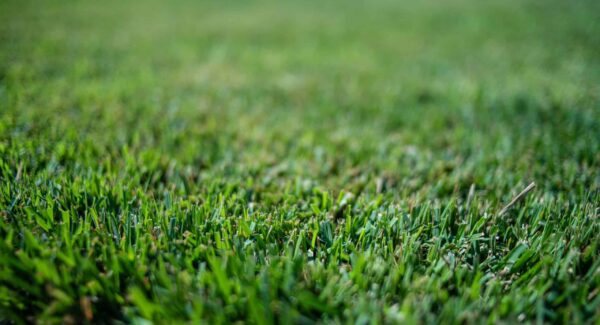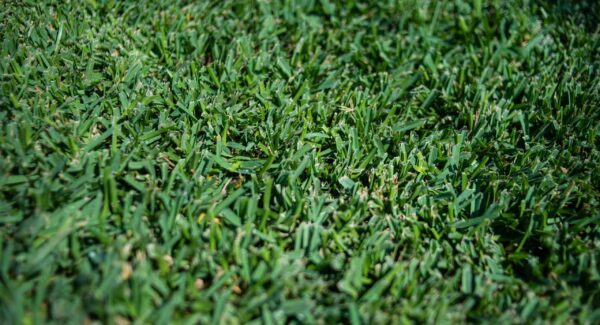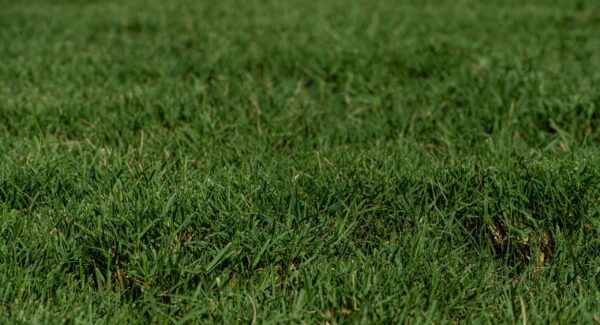How to Aerate Your Lawn by Hand, Without an Aerator
If you’re aiming for a lush, green lawn, lawn aeration is a process you can’t afford to miss in your maintenance routine. It involves perforating the soil to allow air, water, and nutrients to penetrate the grass’s roots. Investing time and effort into aerating your lawn pays off by promoting healthier growth. By breaking up compacted soil and thatch layers, aeration facilitates better airflow and water absorption, aiding your lawn’s overall health and development.
This practice involves creating holes and slices or using various methods to enable air, water, and nutrients to permeate the soil. For larger areas, you can opt for manual methods or mechanical aerators. While the former might be more effective, hand aeration remains a practical choice for those with smaller lawns or seeking a budget-friendly solution.
Here, we provide insights into why and how to aerate your lawn by hand.
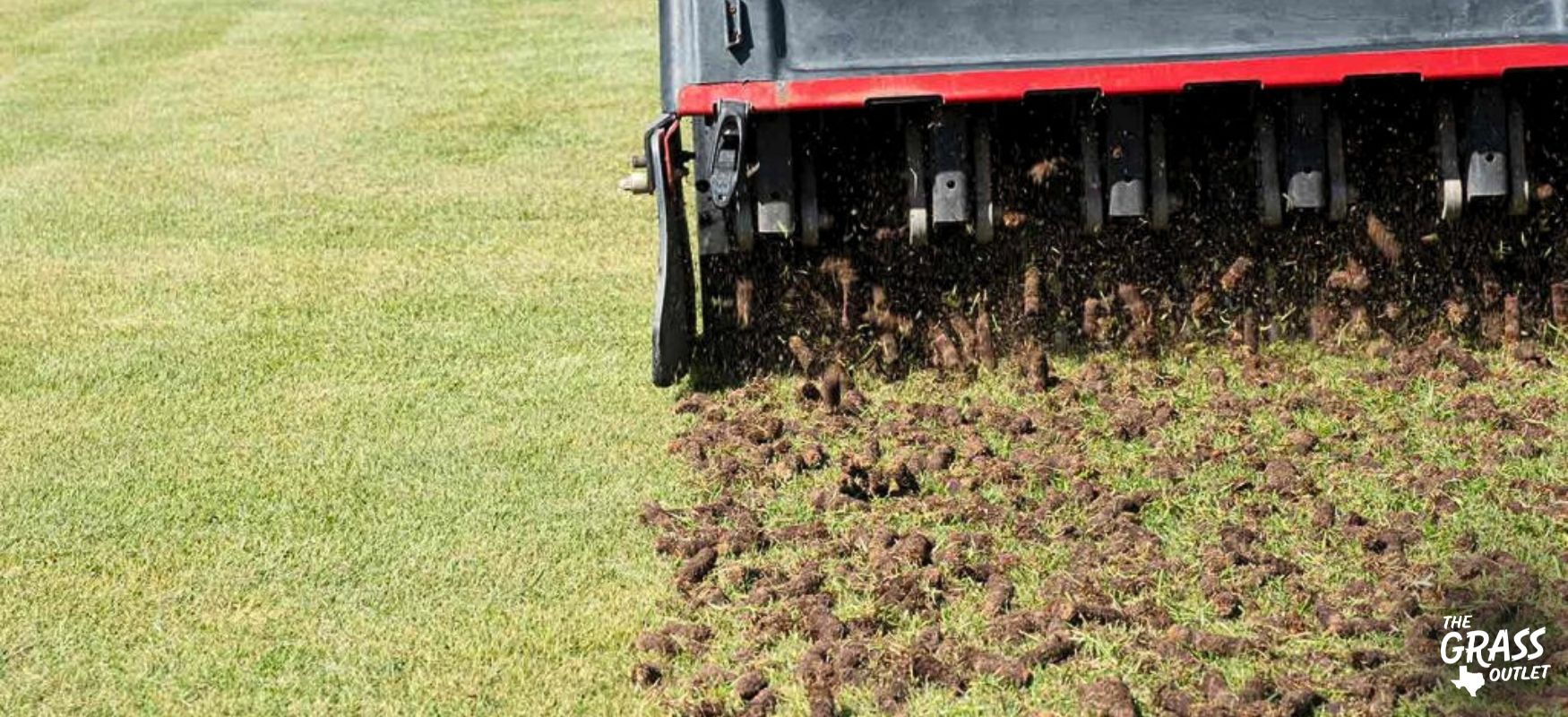
Signs You Need to Aerate Your Lawn
Inadequate access to essential resources stunts root growth, leading to shorter roots that remain closer to the soil’s surface. Aeration promotes the development of a robust, deeper root system, which fosters grass growth.
By aerating, you allow moisture and air to penetrate, helping microbes break down thatch.
But how do you know when to aerate? Frequent use and heavy foot traffic, which can compact the soil, indicate that your lawn requires aeration. Aeration is also necessary if your yard dries out rapidly and feels spongy underfoot, indicating excessive thatch accumulation and poor water penetration. Another sign might be puddles and persistently wet areas after watering, which point to soil compaction and inadequate drainage.
Thin patches, yellow or brown areas, and sluggish overall growth also signal insufficient access to water, air, and nutrients.
When Should I Aerate My Lawn?
As we can see, aerating the lawn should be the initial step in revitalizing its health and vitality.
You should incorporate aeration into your fall lawn care routine. Aim to do it at least once a year, especially for high-traffic areas or lawns with heavy clay soil. To promote optimal grass growth, perform aeration during late winter, spring, or fall.
The timing mostly depends on the type of grass you have: for warm-season grasses like Bermudagrass, late spring or early summer is ideal. In contrast, cool-season grasses benefit most from aeration in February or fall.
It’s essential to avoid aerating in early spring to prevent weed germination. However, if spring aeration becomes necessary, targeting late spring around Memorial Day can minimize weed issues while effectively addressing compacted soil.
The Benefits of Lawn Aeration for Your Yard
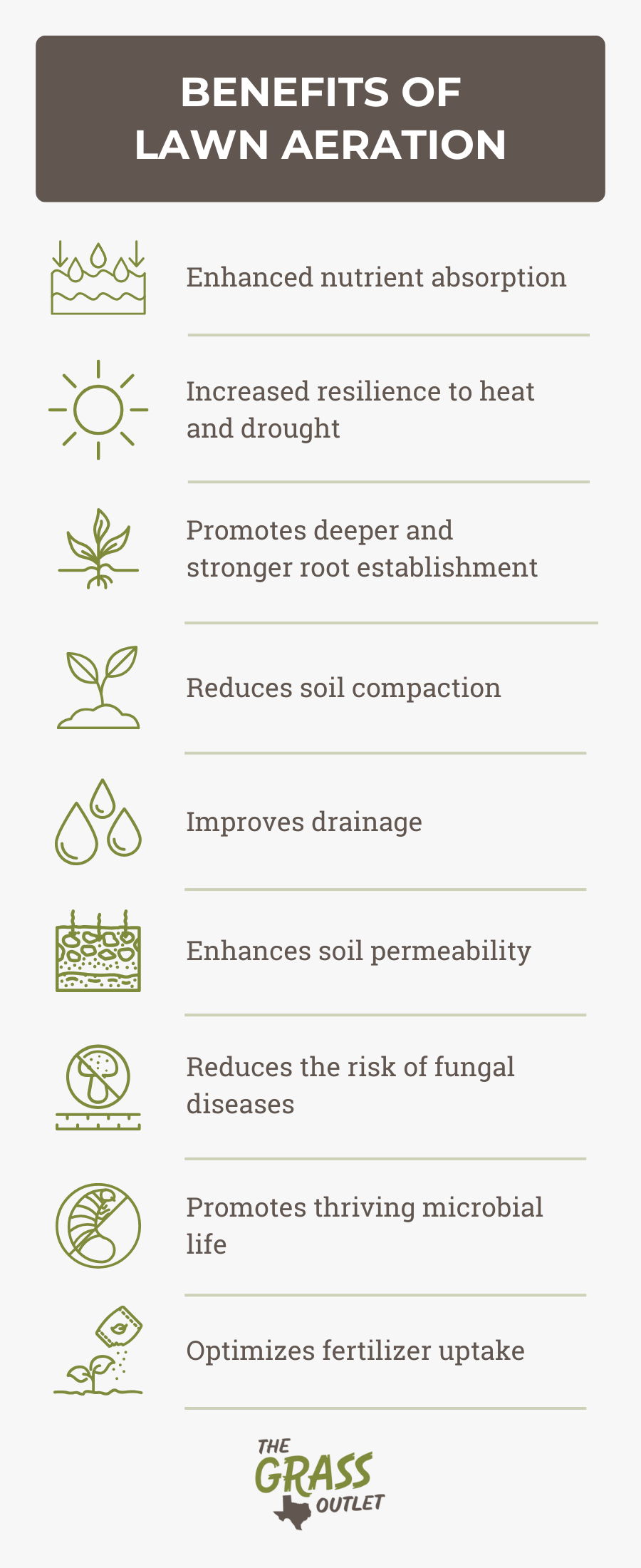
Enhanced nutrient absorption is one of the many advantages and reasons you should aerate your lawn.
It also increases resilience to heat and drought and promotes the establishment of deeper and stronger roots. In addition to reducing soil compaction, it improves drainage, enhances soil permeability, reduces the risk of fungal diseases, promotes thriving microbial life, and optimizes fertilizer uptake.
Now you know the benefits of lawn aeration and why and when you should aerate your lawn, let’s delve into the methods and equipment needed for hand aeration.
Tools You’ll Need for Hand Aeration
Using the appropriate tools for hand aeration is crucial for making this process efficient. Here is a list of needed equipment for hand aeration:
- Manual core aerator
- Garden fork
- Aerator shoes
- Lawnmower
- Garden sprinkler
Before aerating, it’s essential to trim your grass to the appropriate height. Additionally, watering the lawn beforehand using a garden hose and sprinkler can facilitate the aerator’s easier insertion into the ground.
This means that whatever method you choose, proper preparation paves the way for adequate manual lawn aeration.
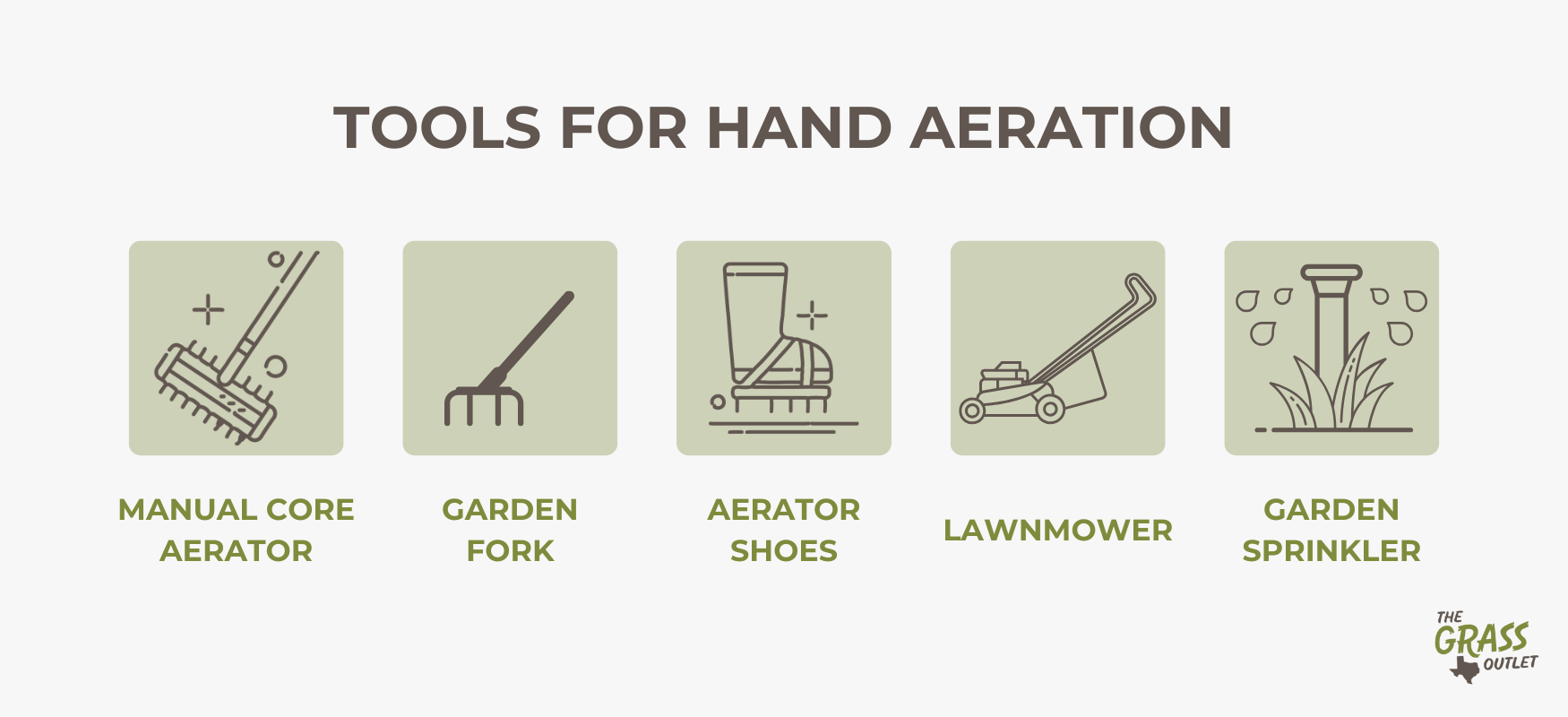
Preparing Your Lawn for Aeration
Before we describe each method for hand aeration, here’s what the area preparation process should look like:
- Start by removing weeds from the entire lawn.
To ensure a smooth process, clear the yard of debris such as leaves, sticks, and other plant matter.
- Trim your lawn to an appropriate height and consider dethatching if necessary.
Before aeration:
- Mow the yard to allow easy access for the aerator.
- If your mower doesn’t have a bag for grass clippings, gather and dispose of them afterward.
- Trim the grass to an appropriate height, usually around 2 inches, which aids in effective soil penetration by the aerator.
Mowing before aeration also prevents potential damage to grass roots and blades caused by tangled soil cores.
- Water the ground adequately.
Check the soil moisture level. Manual tools perform best in soft, slightly moist soil. It’s recommended to aerate when the soil is adequately moist but not overly saturated. To facilitate aeration, water the lawn a day or two prior. Alternatively, aerate after a rain shower.
Why is watering important? Moist soil is more flexible, allowing the aerator’s tines or spikes to penetrate deeper, thus improving the aeration process’s effectiveness. Additionally, sufficient soil moisture ensures a smoother process and reduces the risk of damage to your lawn and the manual aerator.
With your lawn adequately prepared, you can proceed with the aeration process.
Step-by-Step Guide to Aerating by Hand
Using a lawn aerator
When it comes to aerating your lawn, you have two primary options: manual aerators and power aerators. Each type has its distinct characteristics and functionalities.
Manual aerators are operated while standing and involve plunging a tool into the ground to create holes or plugs in the soil. Various manual aerators are available, but a manual core aerator is recommended for optimal results. These aerators feature hollow cylinders that extract soil cores, promoting better growth and absorption. This tool features a handle and a foot bar, requiring you to grip the handle with both hands to drive it into the soil. The foot bar provides additional leverage in areas with overly compacted soil.
A core aerator aerates your lawn by penetrating the earth with hollow tines, creating holes, and extracting small plugs of soil. To be efficient, the aerator must be run over the entire lawn.
While very useful, manual aerators can demand a lot of time and work, especially for more extensive lawns.
Using a garden fork
A garden fork is useful if you have a small lawn or need to tackle specific issues. It features a handle and four or five short, sturdy tines.
This method resembles spike aeration and efficiently penetrates compacted soil to loosen particles. Press down with the fork to create holes in the grass. Then, rock the fork back and forth to widen the holes. Repeat this process by moving a few inches until you’ve aerated the lawn.
This tool is the most commonly used and cost-effective for manual lawn aeration but requires the most time and effort. It best suits smaller areas such as side yards or road verges.
Using aerator shoes
These shoes have sharp spikes in the sole, allowing you to aerate your lawn while walking across it. Numerous aerator shoe spike varieties and brands can be found online and at home and garden stores.
You can customize the straps that secure the spikes to the bottom of your foot to accommodate regular shoes, sneakers, or work boots. The pressure from your body weight pushes the spikes into the ground, creating small holes in the lawn as you lift your foot.
However, they may not penetrate the lawn deeply enough for optimal effectiveness. That’s why they may appear to be the most straightforward and least physically demanding aeration method, but they aren’t very effective. How long it takes to aerate your lawn depends on the size of your property. High-traffic areas may need extra passes.
After Aeration Care
After completing the manual lawn aeration process, some post-aeration care can significantly enhance the results.
Watering is one of the most important things to do. Water your lawn immediately after aeration to support recovery. It will help settle the soil plugs back into place while promoting good soil-to-root contact and aiding in decomposition.
Consider applying a balanced fertilizer to provide essential nutrients for your grass to thrive post-aeration. Apply compost for lawn, sand, peat moss, or another type of fertilizer. This material will readily absorb through the newly created holes, helping your lawn bounce back from aeration. For prolonged benefits, opt for a slow-release fertilizer.
In the weeks following aeration, try to minimize heavy foot traffic and activities that could compact the soil. This allows your lawn time to recover and fully benefit from the aeration process.
Additional Tips for Effective Lawn Aeration
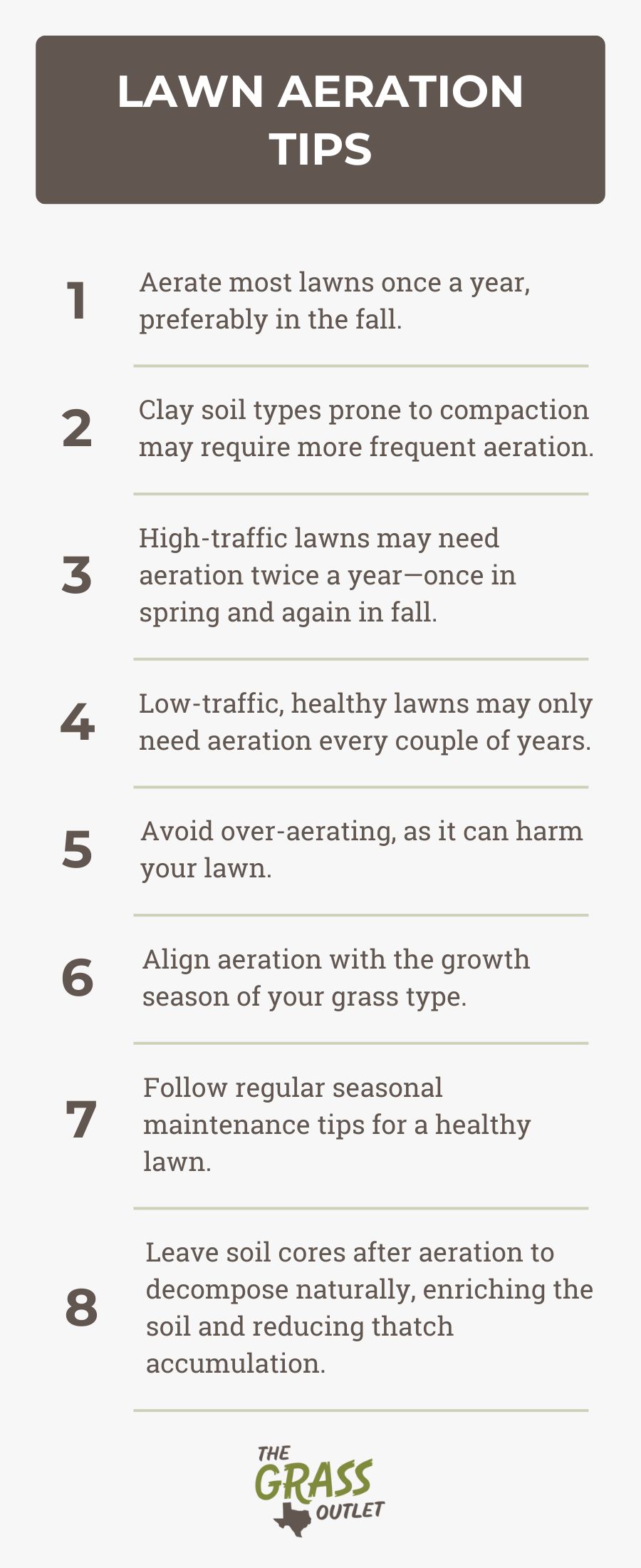
Before embarking on aerating your lawn, it’s important to remember a few more tips.
The frequency of lawn aeration depends on several factors. Most lawns are recommended to aerate once a year, preferably during fall. Clay soil types prone to compaction may require more frequent aeration.
For high-traffic lawns, aerating twice a year—once in spring and again in fall—may be necessary to maintain their health and appearance. Conversely, aerating every couple of years may suffice if your yard is lush, beautiful, and experiences minimal foot traffic. However, it’s essential to avoid over-aerating, as it can harm your lawn, and do not forget that the best time to aerate aligns with the growth season of your particular grass type. Additionally, follow regular seasonal tips to maintain a healthy, lush lawn.
Many homeowners ponder whether to remove the soil cores remaining after aeration, but you can leave them. Like other topdressing materials, these soil plugs contain valuable nutrients and organic matter that will naturally decompose over time, enriching the soil, serving as a natural top dressing, reducing thatch accumulation, and fostering healthier grassroots. By following this practice, you’re improving soil structure and stimulating deeper root growth.
Conclusion
Aerating your lawn enhances the aesthetic appeal of your home and plays a crucial role in maintaining the overall health of the soil, contributing to a healthy soil profile.
Manual methods offer an affordable and accessible option for homeowners seeking to economize on professional lawn care services. Hand aeration provides precision by allowing targeted treatment of problem areas where necessary. Additionally, it’s a sustainable choice as it avoids using fossil fuel-powered machinery.
While you may be proficient in manual lawn aeration, you might consider consulting turf care experts to handle the task. Contact The Grass Outlet to explore your options and get valuable guidance tailored to your lawn’s specific needs.
Once your lawn has been aerated and you witness the results, you’ll be glad you made the choice!
